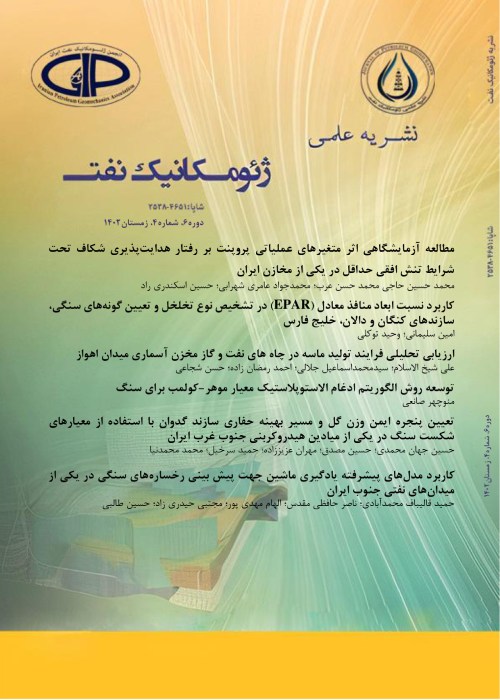Field design of hydraulic fracturing in a sandstone formation (Case study: A vertical well in Hugoton gas field in the USA)
Summary Hydraulic fracturing (HF) is one of the most important technologies ever developed by the oil industry. In this paper, a hydraulic fracture job is designed for Hugoton gas field in a relatively low permeability sandstone in a vertical well. A step by step procedure is introduced and followed to determine stresses, pressures, proper proppant selection, fluid loss volume, required volume of fracturing fluid, pumping duration and rates, geometry of the expected hydraulic fracture and job efficiency. The HF design is compared with numerical results which showed a good agreement. Based on the design parameters it is expected an HF half-length of 500 ft. height of 173 ft. could be achieved at the end of the treatment. Introduction Hydraulic fracturing is a widespread technology used in oil industry to enhance the production. The technology has given the opportunity the produce from many previously un-economic reservoirs. Unlike drilling technology which has been extensively developed in the past decades, most HF technology development was achieved in 1950s and 1960s. The developed design of HF can still be an important part of an HF design without the need of advanced numerical modeling. The classic HF design uses some simplifications that may reduce the accuracy of the method. This shortcoming may be overcame by complementary numerical modeling. However, the classic design is still an essential part of an HF design. Methodology and Approaches The first step in an HF design is determining in-situ stresses and pressures and making sure of their accuracy and reliability. The in-situ stresses were estimated based on empirical gradients. Then the results were calibrated by several well tests such as SRT, DFIT, etc. These tests’ results were also used to calibrate other inputs including pore pressure, lost circulation coefficient etc. An appropriate proppant type was selected based on the required permeability and the cost of the proppant. Results and Conclusions A complete schedule for HF job including injection volume, pump rate, Pad stage volume, proppant usage and fluid efficiency was designed and presented. Based on the design, a hydraulic fracture half-length of 500 ft. with 173 ft. height was expected. Comparison of results of a fully 3D numerical model (with similar input variables, already available from previous studies) and a P3D model (with exact input parameters) with expected design results showed a good agreement. The propagated fracture length and height and also proppant distribution in fractures of the numerical model are in agreement with the expected results. The design procedure proposed in this paper may be used as a guideline for a successful HF design of vertical wells.
- حق عضویت دریافتی صرف حمایت از نشریات عضو و نگهداری، تکمیل و توسعه مگیران میشود.
- پرداخت حق اشتراک و دانلود مقالات اجازه بازنشر آن در سایر رسانههای چاپی و دیجیتال را به کاربر نمیدهد.



